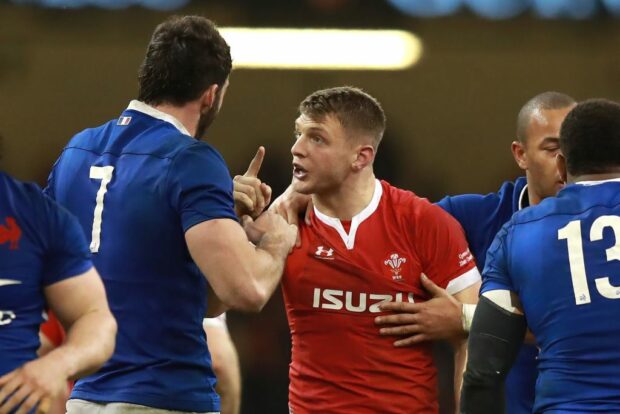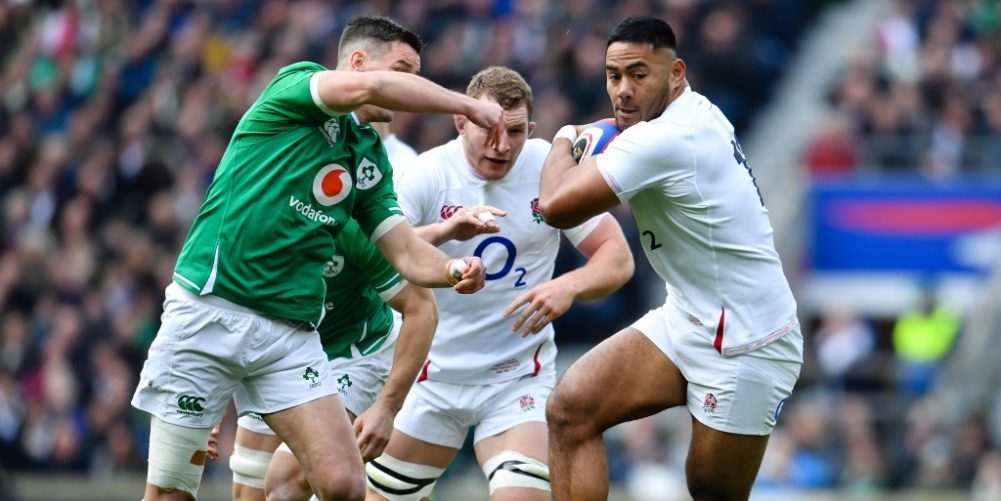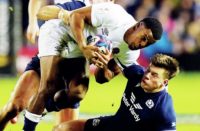ANY time the England forwards play with competitive edge and willingness to run onto the ball from depth and win the collisions they are a different side – and difficult to beat, as Ireland found out last weekend.
However, it is Wales at Twickenham on Saturday, and like every opponent, they will confront England with a new set of obstacles. The Welsh defence had the measure of England's attack last year in Cardiff, and eventually shut it down effectively enough to win a close match and go on to claim a Grand Slam.
What England have to do this time is respond in a way that keeps the Welsh defence guessing. An effective way to do that is to integrate into training the sort of catch-and-pass skills that Kyle Sinckler shows when he moves the ball on quickly, so that players throughout the pack have that ability.
England have been found wanting because they have been too one-dimensional when they come up against well-organised, powerful defences. For example, when England attempted to use one-out carriers in the World Cup final against South Africa, they simply chewed them up and spat them out.
Against Ireland it did not matter too much, because England won the collisions. The Irish were bullied, battered and beaten – in much the same way as England were by the Springboks.
It is what happens if Wales match England for physicality, and how Eddie Jones' side react and asks where else they can find holes in the Welsh defence, that will be the deciding factor.
We saw an improved performance at full-back by Elliot Daly against Ireland, but a lot of that was because the Irish forwards were on the back foot, and the Irish half-backs, Conor Murray and Johnny Sexton, kicked badly for once.
It meant that Daly had time and space to spare, and he made good use of it, although when he is faced with kicks that are more competitive it is not the same. The greater the intensity, the more likely Daly is to make mistakes – and it is too soon to get carried away.
The big difference to the English backline against Ireland was the return of Manu Tuilagi, and Jones will be expecting him to have the same impact against Wales. He was keen as well as confrontational, and he had that mischievous smile which said, “I'm ready”, and in that frame of mind Manu is dangerous.
I guess the main mark made by the George Ford-Owen Farrell 10-12 combination against Ireland was in terms of kicking, but overall I don't know what their trademark is, and I didn't see too much impact.
That's why England could go back to a midfield of Farrell at fly-half, Tuilagi at 12 and Henry Slade at 13 without missing a beat, and have Ford come off the bench with some fireworks.
Wales have lost two games in this campaign, and because he has become the new coach immediately after a Grand Slam season, Wayne Pivac will be feeling the heat.
Questions have been raised about the nature of the Welsh defeats against France and Ireland, and Pivac is already under the microscope – which is what being an international coach is about.
I imagine that the adversity chat in the Welsh camp this week will be, “are you man enough to take on England?”. The turning point against France was the Nick Tompkins interception pass that gifted the try to Romain Ntamack, and after that the Welsh just could not find their way back into the match.
Wales are a bit like Ireland in the sense that they play well at home in front of their own fans, but the problem Pivac faces is that he does not have enough ball-carrying threats. Tighthead prop Dillon Lewis may have scored a good try against France, but overall I didn't see enough really hard, aggressive Welsh carries.
On the plus side, it is good to see that some of their injured players have come back into contention against England, because Liam Williams is world-class, whether he is at full-back or wing, and Cardiff Blues back rower Josh Navidi is a workaholic nuisance around the breakdown.
When it comes to work-rate I would like to see more at No.8 from Taulupe Faletau, and even though it is early days after injury I would be surprised if he does not respond.
I like the Welsh 9-10 combination, with Tomos Williams and Gareth Davies providing a nice talent pool at scrum-half, and Dan Biggar outside them.
Both Williams and Davies are capable of making breaks and posing a big attacking threat, and they also have decent passes, even if their box-kicking is a bit inconsistent.

In Biggar's case, although I don't like his over-the-top contesting of refereeing decisions, I like the rest of what he does. He's a talented player who is strategically and tactically very good, and who puts his body on the line every time he plays.
In the centres Hadleigh Parkes is usually a solid 6/7 out of 10, while Tompkins is starting to come to terms with the intensity of the international game, and playing in front of 72,000 at the Principality Stadium, as opposed to 10,000 at Allianz Park.
Tompkins has made a couple of errors, and missed a couple of tackles, but the signs from the three Tests he has played for Wales so far is that he's got the makings of a good international centre.
The return of a deadly counter-attacking runner like Liam Williams is timely, because they will miss Josh Adams. Before his injury against the French, Adams was as good as Jonny May at finishing chances.
Home advantage counts for so much in the Six Nations, and even though teams are otherwise very evenly matched some of them can't get their act together when they are away.
During the time Jones has coached England they have generally started quickly, while Wales have had the reputation in recent seasons of starting slowly. If that happens on Saturday, Wales could be out of it after 25 minutes, but if they can keep the score close at half-time by fighting in ten minute defensive increments, they could do it.
However, England have a good record at home, and this time I think it is an uphill battle for Wales.

























